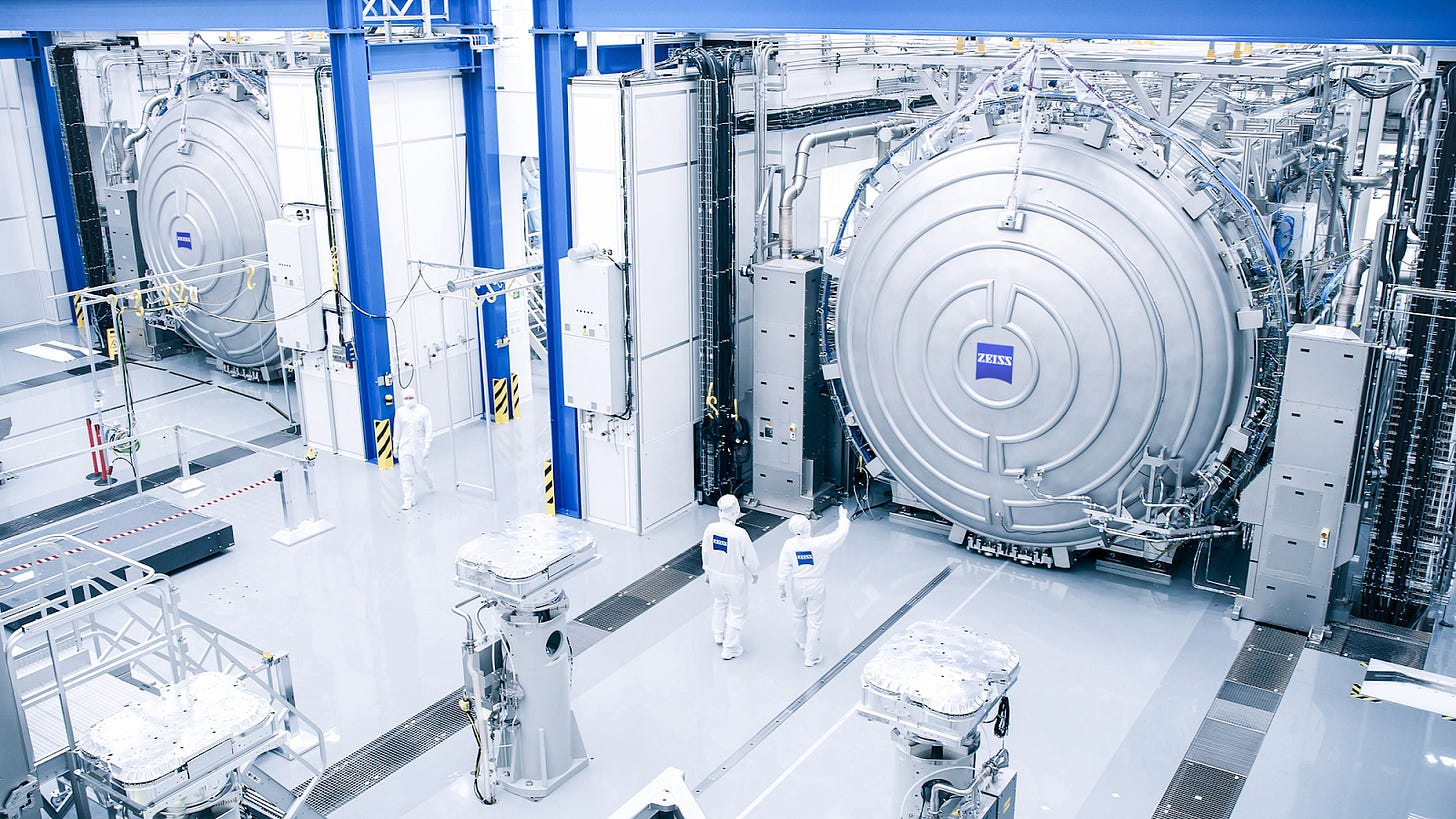#7: Carl Zeiss: The Hidden Optics Powerhouse Behind Every Advanced Chip
In a previous article, I discussed ASML and its dominance in the production of Extreme Ultraviolet (EUV) technology for chip fabrication. In this article, I will cover an important supplier of ASML, Carl Zeiss, who plays a key role in this process by providing ultra-precise optical components that are used in ASML’s lithography machines. Without Zeiss’ optics, ASML would not be able to manufacture these advanced machines.
As mentioned in the previous article, EUV lithography is incredibly precise. EUV light has a wavelength of 13.5 nm, which means conventional glass simply absorbs it. Carl Zeiss manufactures the only mirrors capable of reflecting EUV light, making them essential for chip fabrication.
These mirrors are built with extreme precision—down to the atomic level. Even the slightest movement in the air could potentially damage them. It’s remarkable how these mirrors are made. They consist of alternating layers of molybdenum and silicon, which are polished to perfection at the atomic scale.
Beyond creating optical hardware, Carl Zeiss also produces advanced measurement technology to ensure the accuracy of every component. Their systems guarantee that every lens, mirror, and optical element meets the tight tolerances required for high-performance lithography. Without these systems, even a small defect could lead to major errors in chip production, highlighting how crucial Zeiss’ role is.
The relationship between Carl Zeiss and the semiconductor industry reveals an important truth: the future of computing depends on the ability to control light at incredibly small scales. As demand for faster, smaller, and more powerful chips grows, the importance of precision optics will only increase. Carl Zeiss is, and will remain, a hidden powerhouse at the heart of this technological revolution.


